Last Updated on 29 July 2025 by Greg Brookes
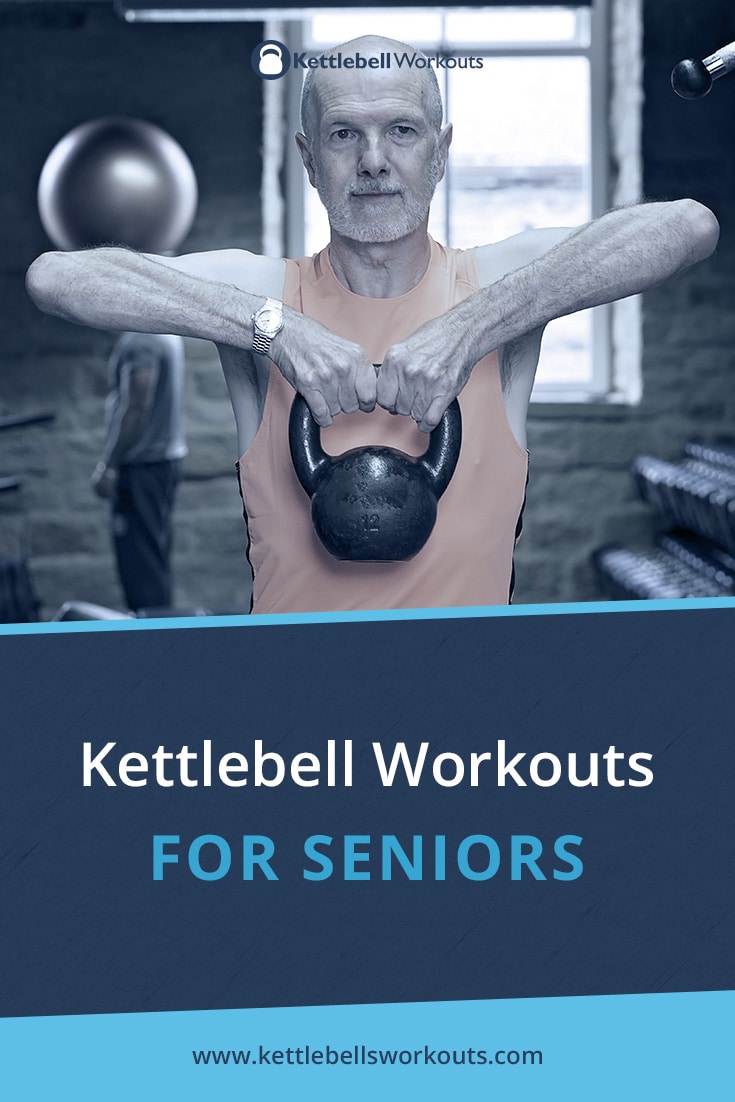
If you’ve ever wondered whether kettlebell workouts for seniors are safe or beneficial, you’re not alone. Many people in their 60s, 70s, and beyond feel uncertain about strength training, worrying about injuries, joint pain, or simply believing it’s “too late to start.”
I’ve coached hundreds of seniors over the years who walked into their first session nervous about lifting weights. Some worried they’d hurt their back.
Others thought their knees were “too worn out” to squat. But after just a few weeks of gentle kettlebell workouts for seniors focused on technique and confidence building, they began to move better, feel stronger, and regain independence in ways they never expected.
In this post, I’ll share a safe and effective kettlebell workout for seniors, along with progressions, regressions, and mobility exercises to help you train confidently at any age.
Need help learning the moves first? Start with my Kettlebell Exercises for Seniors guide.
Why Seniors Often Avoid Strength Training
It’s common for seniors to avoid weights due to fear of injury. Yet ironically, it’s not strength training that leads to injury, it’s lack of it. Weak muscles and poor balance are leading contributors to falls and loss of independence later in life.
The great news is that kettlebell training, when taught correctly, builds strength, balance, confidence, and resilience for everyday life. You don’t need to train like an athlete to reap these benefits; simple, smart movements create life-changing results.
Benefits of Kettlebell Workouts for Seniors
Here are some of the main benefits my senior clients have experienced:
- Improved Grip Strength: Essential for daily tasks like opening jars, carrying bags, or getting up from chairs.
- Better Balance and Stability: Exercises like goblet squats and suitcase carries challenge stabilisers and coordination.
- Stronger Hips and Legs: Deadlifts and squats reinforce glutes and quads, making climbing stairs or rising from chairs easier.
- Core and Postural Strength: Every kettlebell lift demands spinal alignment and core bracing, improving posture.
- Increased Bone Density: Loading movements strengthen bones, critical for reducing osteoporosis risk.
- Mental Confidence: Knowing you can lift, carry, and move with ease builds psychological resilience.
Safety Guidelines for Seniors Using Kettlebells
Here are essential safety considerations before starting:
- Start light and focus on form. Technique first, then load.
- Maintain a flat back and engaged core during deadlifts and carries.
- Breathe deeply, exhaling through effort (standing up, lifting) to create natural bracing.
- Avoid overhead pressing until you have strong shoulder mobility and stability.
- Clear your training area to prevent trip hazards.
- Listen to your body. Discomfort is fine; sharp pain is not.
Fundamental Kettlebell Exercises for Seniors Workouts
1. Kettlebell Deadlift
(See full breakdown in: Kettlebell Single Arm Deadlift)
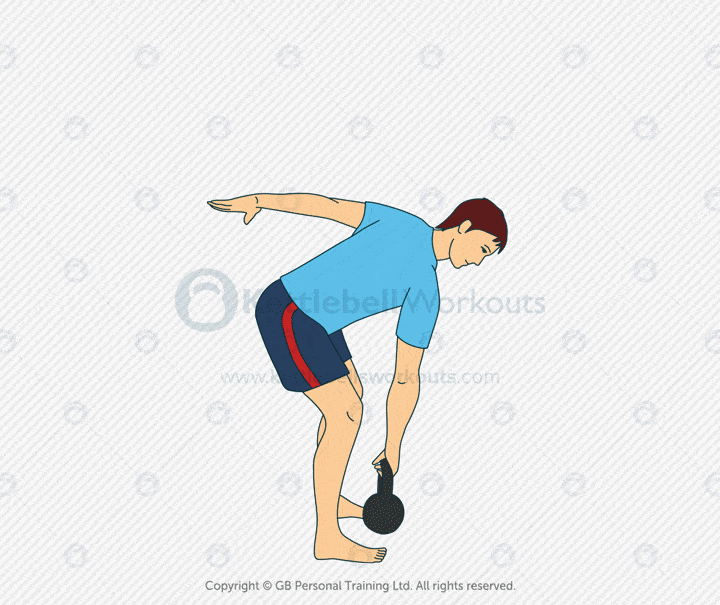
Why it matters: Builds strong hips and glutes for daily tasks like lifting shopping bags or getting up from the floor.
How to do it:
- Stand with feet shoulder-width apart, kettlebell between feet.
- Hinge at hips with soft knees, back flat, chest lifted.
- Grip the kettlebell handle firmly and stand tall, squeezing glutes at the top.
Common mistakes: Rounding the lower back, bending knees too much like a squat.
Daily life carryover: Picking up grandchildren, lifting garden tools, or getting up from low seats.
2. Goblet Squat to Chair
(See full breakdown in: Kettlebell Goblet Squat)
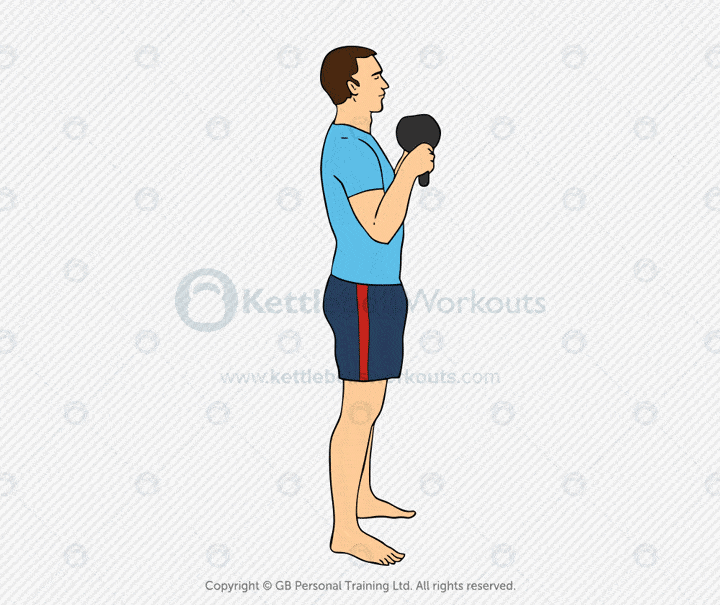
Why it matters: Builds leg strength, mobility, and confidence standing from low surfaces.
How to do it:
- Hold kettlebell at chest height, elbows down.
- Sit back and down to the chair with control.
- Press through heels to stand tall, squeezing glutes at the top.
Common mistakes: Knees collapsing in, chest dropping forward.
Regression: Use bodyweight only or a higher chair.
Progression: Remove chair or add a pause at the bottom.
Daily life carryover: Getting up from sofas or toilet seats confidently.
3. Suitcase Carry
(See full breakdown in: Kettlebell Suitcase Carry)
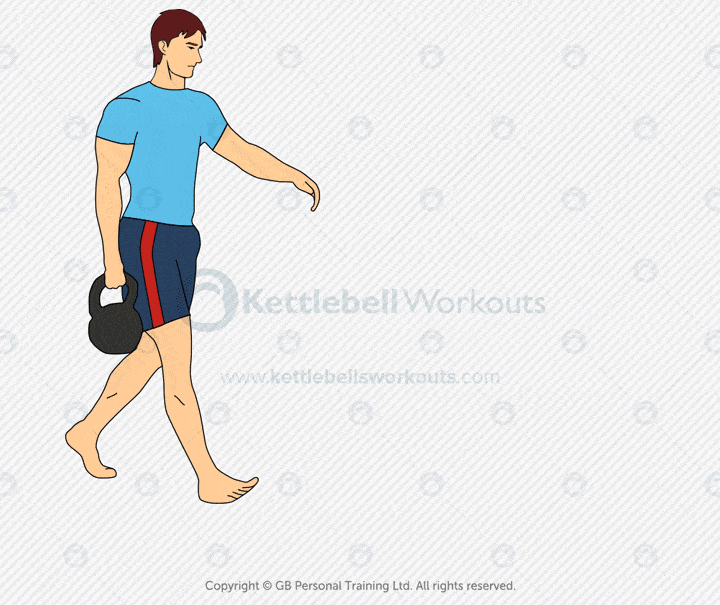
Why it matters: Strengthens grip, obliques, shoulders, and improves lateral balance.
How to do it:
- Hold kettlebell by your side.
- Stand tall, shoulders back, core braced.
- Walk 10-20 metres each side, maintaining upright posture.
Common mistakes: Leaning sideways towards or away from the kettlebell.
Daily life carryover: Carrying shopping bags evenly without leaning or strain.
How to Progress Safely Over Time
Progression is key to continued improvements:
- Increase kettlebell weight gradually as form becomes confident.
- Add repetitions or sets to build endurance.
- Vary carries and walks to challenge balance from different angles.
- Incorporate light swings once deadlifts and hip hinges are mastered, focusing on form and rhythm.
Remember, small progressions lead to big long-term results without risking injury.
Mobility Considerations for Seniors Using Kettlebells
Joint health and mobility are critical for safe lifting and fluid daily movement as you age.
In addition to general warm ups, I recommend including these kettlebell mobility-focused exercises:
1. Kettlebell Slingshot
(See full breakdown in: Kettlebell Slingshot)
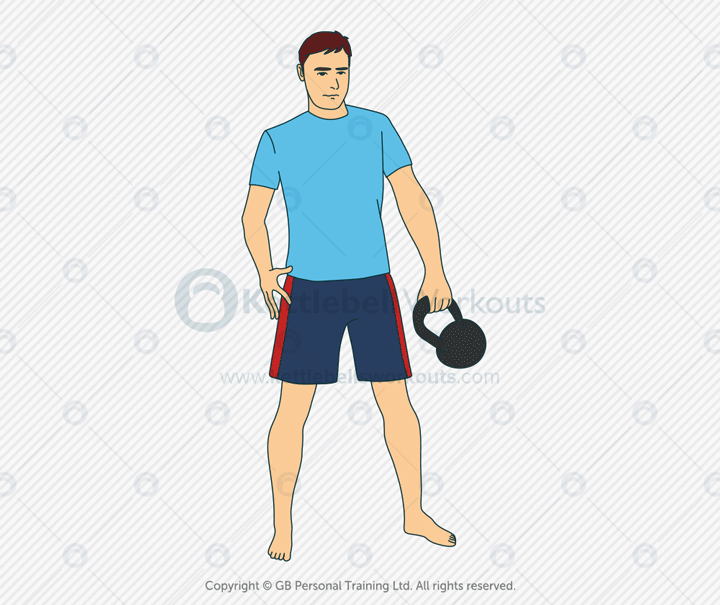
Why it helps: Improves shoulder mobility, grip strength, and core stability while building familiarity with kettlebell handling.
How to do it:
- Stand tall with feet hip-width apart.
- Pass the kettlebell around your waist in a controlled manner.
- Keep your hips and torso still as you circle for 10-15 reps each direction.
2. Kettlebell Halo
(See full breakdown in: Kettlebell Halo)

Why it helps: Mobilises shoulders and upper back while encouraging good posture.
How to do it:
- Hold kettlebell by the horns upside down at chest level.
- Circle it slowly around your head, keeping elbows in tight and core engaged.
- Perform 5-8 reps each direction.
3. Kettlebell Good Morning
(See full breakdown in: Kettlebell Good Morning)
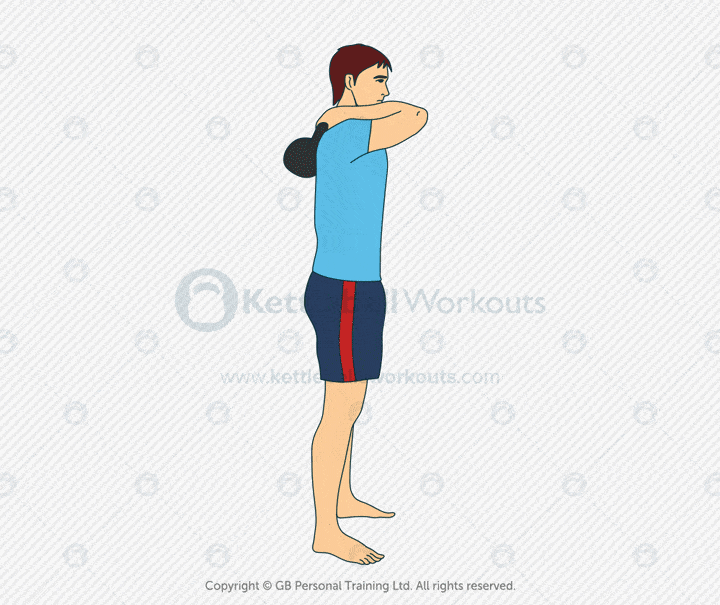
Why it helps: Stretches and strengthens the posterior chain (hamstrings and lower back) safely.
How to do it:
- Hold the kettlebell against the chest or in the soft area between the shoulder blades.
- With soft knees, hinge at the hips keeping back flat until you feel a light hamstring stretch.
- Return to standing by driving hips forward.
- Perform 8-12 reps with a light kettlebell focusing on control.
These mobility exercises can be used as part of your warm up, movement prep, or light recovery days to maintain flexibility, joint health, and kettlebell confidence at any age.
Programming Kettlebell Workouts for Seniors
Here is how I structure kettlebell workouts for my senior clients:
- Warm Up: Joint mobility, dynamic stretches, hip hinges (5-10 minutes).
- Main Workout: 2-4 kettlebell exercises, 2-3 sets each, 8-12 reps focusing on form.
- Cooldown: Breathing drills, chest opening stretches, and hip flexor release (5 minutes).
Frequency: 2-3 sessions per week, combined with walking or mobility work on other days.
Sample Kettlebell Workout for Seniors with Progressions and Regressions
Here is a simple, effective kettlebell workout you can perform 2-3 times per week to build strength, mobility, and confidence.
Warm Up:
- Kettlebell Slingshot x 10-15 each direction
- Kettlebell Halo x 5-8 each direction
- Bodyweight squats x 10
Main Workout: Perform 2-3 rounds, resting as needed between exercises.
- Kettlebell Deadlift – 10 reps each side
Regression: Elevated kettlebell on a block or perform bodyweight hip hinge only
Progression: Increase weight or tempo deadlifts (3s down, 1s up) - Goblet Squat to Chair – 8-12 reps
Regression: Use bodyweight only or a higher chair
Progression: Remove chair or add a pause at the bottom for control - Suitcase Carry – Walk 10-20 metres each side
Regression: Use lighter kettlebell or reduce distance
Progression: Increase distance or kettlebell weight - Kettlebell Good Morning – 10 reps
Regression: Bodyweight hip hinge without load
Progression: Increase kettlebell weight slightly while maintaining control
This workout targets full-body strength, balance, and joint mobility in a safe, progressive way. As always, prioritise technique before adding weight or volume.
Coach’s Insight: Greg’s Take
One of my clients, aged 72, was nervous about kettlebells at first. We started with single arm deadlifts and goblet squats to a chair.
Within weeks, her confidence grew so much that she began carrying her shopping bags with ease, standing from chairs without using her hands, and walking with improved posture.
Another gentleman, age 68, improved his golf drive distance simply by adding deadlifts and carries twice a week.
Strength training isn’t just about building muscle, it’s about reclaiming your independence.
Final Thoughts
Kettlebell training for seniors is about building a strong, capable body that supports your life goals; whether that’s gardening, travelling, playing with grandchildren, or simply feeling confident in your daily movement.
Start light, prioritise technique, and progress gradually. The benefits you’ll gain go far beyond the gym floor.
Curious how kettlebells can support you through every stage of life? Discover more personalised kettlebell training options in our all-in-one guide.
Frequently Asked Questions
Yes, when programmed intelligently with focus on technique and appropriate load.
Most women benefit from a 6-8kg kettlebell, while men often start with 8-12kg depending on strength and mobility.
Only after mastering deadlifts and hip hinge technique. Swings are effective but require proper coaching.
2-3 times per week alongside walking or mobility work for balance and recovery.
Yes. Carries, deadlifts, and squats build lower body and core strength, enhancing stability in daily life.

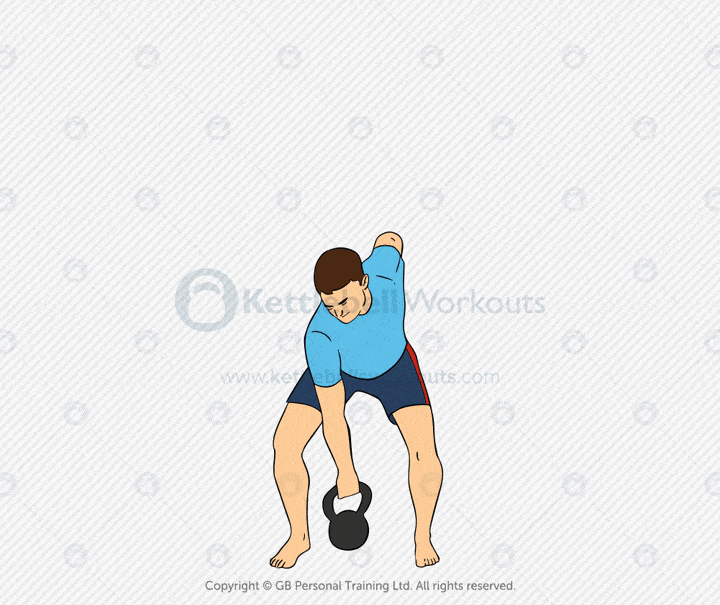


I’m 78 years old; 5’11” tall and weigh 197lbs. I am very active and work out (row, bike, daily pushups and do some weights) a couple of times a week. I work full time every day and have a pretty healthy diet. What weight kettlebell should I start with? I have a 35 lb kb, but it is too heavy for many exercises.
Everyone is different Stephen, but usually, a 12kg is a good place to start with the basics. Enjoy!
Hi Greg, I am a 73 yr fairly fit woman who has never used kettlebells before. Could you suggest what weights I should start with & suggestions for some beginners exercises.
Sure Carole, take a look at these 5 beginner exercises
lol sorry i have a correction, I meant body weight reverse lunges has helped my hips in surfing, meaning i starting slowly as you directed!!! LOL
Hi Gregg, it’s morning here on Oahu and good morning to you, I would like to thank you so much for kind and sound direction. I followed it all ,it has helped me so much, much shoulder is better to no overhead stressing, and I am actually using a 35 pounder and loving it. Also followed your suggestion on starting slow, beautiful, no kettle bell reverse lunges no pain in my hip, when I surf or paddle or kettle belling, awesome. Much mahalo and ahhhloha for your kindness!!!
hello again,Greg are you saying,for example do 15-20 reps on each side, like with the reverse lunges-15/left,15/right? Old and confused,lol thank you,again!!!
I’d begin slowly William building up to 12 – 15 reps on each side.
Hi Greg— so thrilled to have ‘found’ your website! I’m 70 years, and a competitive road and track runner. I’m a beginner with kettlebells- just bought a set of 13 pounds kettlebells. I’ve been using barbells for upper body for years— but no more than 8-10 pounds. I still have a little soreness in the my left shoulder from a shoulder impingement last year- where my upper shoulder socket meets the upper arm ( hard to describe)— I ONLY feel some tightness if I do the ‘ lateral fly’ exercise with my barbells… thus, I’m assuming any kettlebell exercises where I’d have to raise my left arm above my head would NOT be advised. Yet I CAN do the kettlebell swings with good form and no discomfort. Please advise… thank you! Your program and videos, information is phenomenal!!!
Hi. Enjoyed all the videos I watched. I’ll soon be 80, play pickleball 2 to 3 times a week, teach yoga twice a week. So I’m thinking a 15 pound kettlebell, right?
Yes Jo a 15lb kettlebell should be OK but start with these 5 basic exercises and see how you get on. You may find the Halo’s a little challenging with 15lbs.
I recently strained the Deltoid muscle in my right shoulder. I have had a steroid injection by physician and told to use ice on the should It is still painful when I raise my arm higher than my shoulder, but I want to continue to do my kettlebell workouts, Two handed swings I think are out for now, but what about the Deadlift? Are there kettlebell exercises that do not put stain on my shoulder muscles for now, until the pain is gone? I am concerned about further injury to my shoulder, but I want to keep some sort of kettlebell workout going. But maybe I should rest a few more days until the pain is gone, what is your advice?
I have been using variations of your kettlebell workouts for two years, as I am a senior, I have to use 15lb for swings, cleans, and a few others. but use 25 lbs for deadlifts, and rows. Love your videos and demonstrations, they have really helped insure I am doing the exercises correctly.
Sorry to hear about your shoulder Bob, please check out my article on shoulder rehab for helpful info on moving forwards. Here’s also info on injury prevention for shoulders
I just started using kettlebell last week, and i am enjoying the exercises. How long should I do the beginners before moving to intermediate workouts?
Hello Barbara, there are 4 follow along workouts included here. Start at workout 1 and only move on to the next workout when you can complete 3 circuits. When you can complete Workout 4 for 3 circuits then it’s time for the intermediate level. Only perform 1 workout per day. Best of luck
I’ve been enjoying and benefitting from your kettlebell workouts this last month, and have to thank you for your excellent advice. At 60 I find numerous injuries from too many years of sports have ruined my ability to benefit from traditional weight workouts. This month I have just been doing your kettlebells workouts and finding my lower back pain is markedly decreased and my marginal shoulder is much more stable, as well as my knees. The workouts are shorter than I am used to, but I find the intensity is excellent because I am not modifying and watering down the exercises. Mobility is improving as well. I am excited to do the workouts because they really work and don’t cause pain. Thank you so much!
I am 70 years, old woman, and have a small tear in a lower disc. Not bad enough for surgery my doctor said it would probably never heal at my age but does cause chronic back pain My doctors say to strengthen the muscles in my back to support the lower back. I have never used a kettlebell and saw that a 9 lb one was best to start with for women, I have done repetitions of 2lb weights to strengthen the back as well.
What do you suggest to start with kettlebell workouts?
Good to hear from you Rose. With any back issue you need close supervision to ensure you are moving correctly. I would begin with bodyweight exercises, I’ve got a few exercises and workout here that should help.
I’m 68 years old and have a bad lower back. Do you suggest I try kettleball exercises to straighten my lower back.
Hi Dale, if you have an existing lower back problem then you will need to get that fixed before starting your kettlebell training. I would then suggest that you find a qualified instructor who can monitor your technique and progress. Best of luck.
16 kg is a bit too heavy for me to start kettlebell workouts at 62. Can you recommend a lower weight to get started but still be effective?
Hi Jody,
I wouldn’t recommend you start with a 16kg unless you are experienced with lifting weights. A 12kg is what I recommend for males and an 8kg for females. I’ve got more on selecting kettlebell weights here.
Hi, I am 77 years old and an athlete, was a 4 handicap golfer and hockey player.
I had open heart surgery in 2015 and haven’t done very many sports since. I just bought a 16 lbs
kettlebell and would like to know what exercises to start with and which ones to avoid for now.
I have been working out with low weight hand weights and rubber bands but would like to get a little stronger since I might return to golf this summer. Anything you might suggest would be of help I’m sure.
Thanks,
Gordon
Thanks Gordon, take a look at these 5 kettlebell exercises to start with. All the best
I have bad knees — how can I adjust the kettlebell exercises to both protect and strengthen my knees until they are strong enough to do the exercises full tilt? I am having trouble specifically with anything that has to do with squats. Is kettlebell exercise just not going to work for me?
Have you tried focusing on the Swings or Single Arm Deadlifts Karen. You may find that the lack of knee bend is manageable. I’d want to investigate the source of your knee trouble too, are your hips and ankle mobility OK. If not work through some mobility movements here: https://kettlebellsworkouts.com/joint-mobility/
I,m over 60 ,where can I get basic kettlebell training>?
Depends where you live John, take a look online for a local certified kettlebell instructor. Best of luck.
Another great post, Greg! I’m 52 and have been using your full body mobility series as a warm up for my strength training and body weight workouts this past year. It’s helped me regain full mobility in my upper body after many years of a sedentary and overweight lifestyle. And, I believe it has protected me from injury. Thanks so much for your excellent work and for the new targeted suggestions you’ve been providing for the 50 plus age group!
Thanks Carmen, yes I can’t emphasize the importance of joint mobility enough, it’s changed the lives of many of my clients for the better 🙂